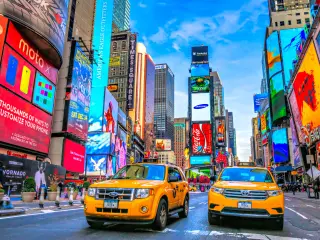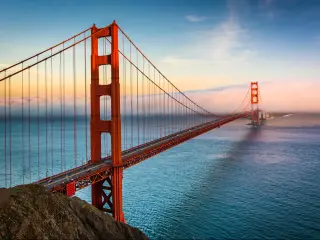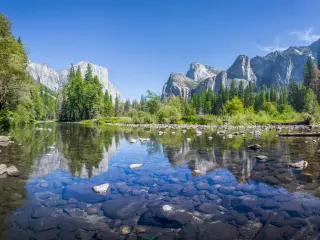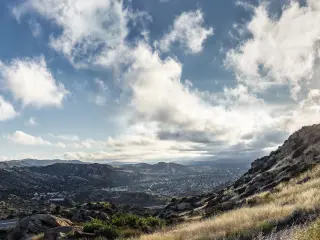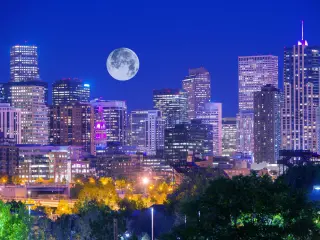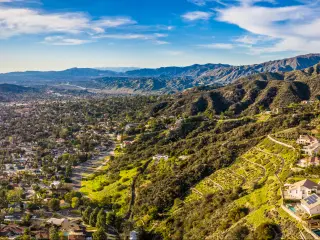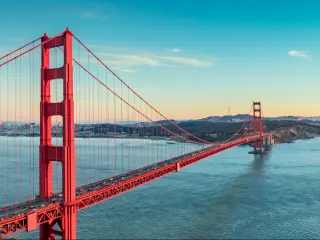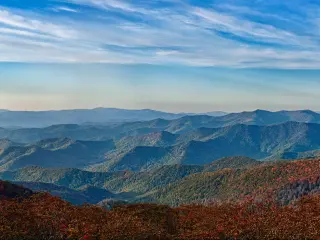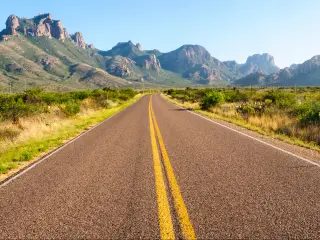Road Trip From San Francisco To Death Valley National Park
Visiting Death Valley National Park means a trip to the lowest, driest, and hottest national park in the United States. Several hundred feet below sea level, you'll find salt flats, sand dunes, and even a ghost town.
It's possible to get to Death Valley National Park by flying out to Las Vegas and then driving. But since you'll need to drive into the park anyway, you may as well make a full road trip out of it. This way, you'll have the opportunity to have a leisurely trip, plus you'll get to stop and see the sights along the way.
You can drive from San Francisco to Death Valley National Park in about 8 hours. The trip is doable in a day, but you may as well take the more scenic route and stop for a day or two in Yosemite National Park and Inyo National Forest.
How Far Is Death Valley National Park from San Francisco, and How Long Will the Road Trip Take?
The best route to get from San Francisco to Death Valley National Park will be about 408 miles, and should take you a little under 8 hours to get there. This is without accounting for bathroom and gas breaks, as well as stopping for mealtimes. You'll probably need to tack on a couple extra hours to allot for these stops.
| Route | Distance | Driving Time |
|---|---|---|
| Fastest Route (via I-5 S) | 460 miles | 7 hours 30 minutes |
| Scenic Route (via CA-120 E and US-395 S) | 410 miles | 8 hours |
An 8-hour drive to Death Valley National Park could be feasibly done in a day. But why would you want to skip out on all the amazing sights you'll be passing by on your route? To get the most out of your trip, it's best to split your trip into a 2 or 3-day adventure.
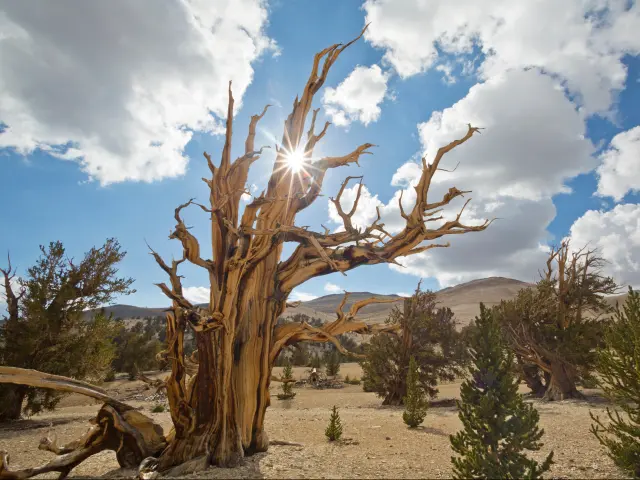
You should also consider the fact that if you're leaving on a Friday or Saturday, you might be delayed by other people leaving San Francisco for the weekend. This could potentially add a few hours onto your route, depending on how bad the traffic is and what time you end up leaving.
Read on for the best way to get from San Francisco to Death Valley National Park, and some of the amazing things you'll get to see along the way.
Best Road Trip Route from San Francisco to Death Valley National Park
The fastest route to Death Valley National Park from San Francisco is via the I-5 S. This route, however, isn't as scenic, and will only shave off about half an hour as opposed to the route that will take you through Yosemite National Park and Inyo National Forest.
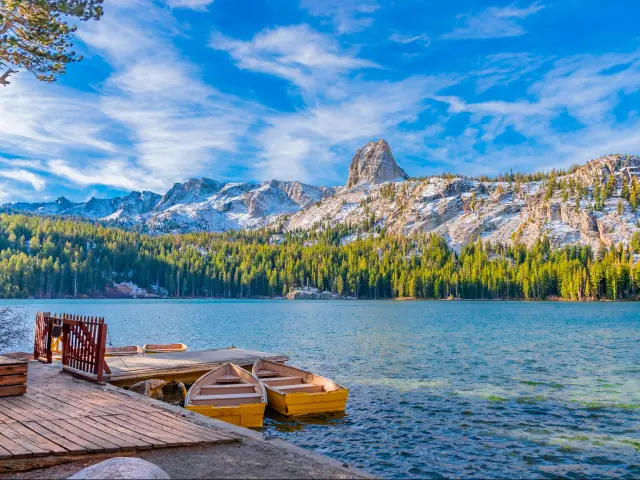
🚗 460 miles ⏱️ 7 hours, 30 minutes
Before you reach Death Valley, this itinerary will take you through Yosemite National Park and the beautiful Mammoth Lakes.
There are also plenty of detours you can take along the way if you have the time and don't mind a slightly longer trip.
Whether you're flying into San Francisco, or you simply don't have your own transport in the city, renting a car for your road trip is something you'll want to take care of ASAP.
For an easy-to-compare view of rental options for your road trip from San Francisco to Death Valley National Park, take a look at our partner site, RentalCars.com.
Road Trip Route from San Francisco to Death Valley National Park
To get to Death Valley National Park from San Francisco, you'll start by heading out by the Bay Bridge towards Oakland. Go past the Oakland Zoo and Lake Chabot, and hit the I-580. When you cross over the San Joaquin River, you'll reach Highway 120, which will bring you the rest of the way to Yosemite National Park.
You'll follow this same highway through the park. At this point, the highway will be known as Tioga Road. Since this particular road can sometimes be closed, you'll want to double check that it's going to be open when you travel. If you're taking your trip during winter, know that this road will definitely be closed, reopening in the spring once the snow clears.
Once you pass through Yosemite, you'll take the US 395 through Inyo National Forest and past Mammoth Lakes. On your way, you'll also pass Kings Canyon National Park, as well as Sequoia National Park. When you reach Lone Pine, hang a left to get onto State Route 190, which will take you the rest of the way to Death Valley National Park.
Best Places to Stop Between San Francisco and Death Valley National Park
Since you're driving instead of flying, you'll want to make the most of your journey to Death Valley National Park. Luckily, there are quite a few places to stop by on your way.
Visit Yosemite National Park
There are few places in the United States more beautiful or more famous than Yosemite. Plan to spend at least a day in this incredible park, and make sure to pack your camping and hiking gear.
In Yosemite, you'll find amazing waterfalls, hiking trails, fishing locations, and even a museum where you can get a taste of the park's history.
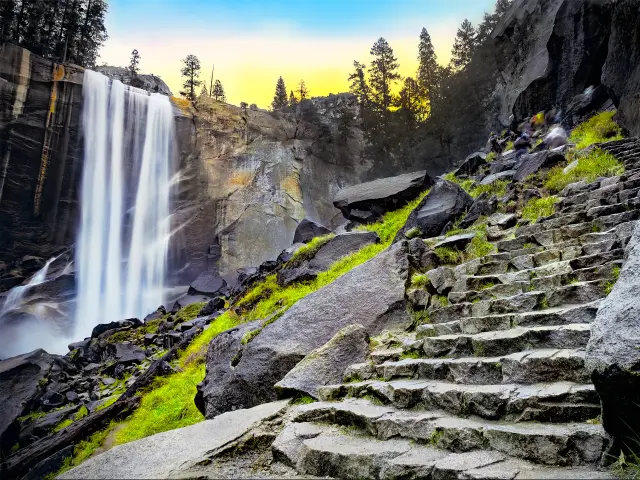
If you're into music, consider taking this road trip in July. This is when the annual Yosemite Music Festival takes place. Mixing talented musicians with the beauty of this national park is a recipe for an amazing experience.
If you're looking for a place to stay in Yosemite and prefer roughing it, camping is definitely an option. On the other hand, you could also stay at Evergreen Lodge, which is just 1 mile outside of Yosemite, and is surrounded by nature and incredible views. Not only is the lodge close to locations where you can go skiing, rock climbing, and hiking, they also have a seasonal outdoor pool.
READ MORE - Click here for more great hotel options
Explore Death Valley National Park
When you reach Death Valley National Park, you'll have plenty of things to keep you busy as you explore. From sand dunes to mountains to the Keane Wonder historic gold mine, you won't be at a shortage for things to do.

While you might expect a pretty desolate area, there are lots of places you can stay at in the valley. If you go to the south side of the valley, you'll find the area's more luxurious resorts.
If you're looking for something a little more central in Death Valley National Park, consider staying at the luxurious Inn at Death Valley. Enjoy their exercise facilities, as well as their outdoor pool. And don't forget to visit their sauna for some serious relaxing.
READ MORE - Click here for more great hotel options
Things to See on a Road Trip from San Francisco to Death Valley National Park
There are so many incredible sights you'll be able to stop and see on this road trip, it's hard to know where to start. Here are just a few examples of things to visit.
- Rainbow Pool - Your first stop could be at this beautiful natural pool and waterfall, where you can take a dip or do a little cliff jumping. Just be aware that this popular location can get crowded.
- Inyo National Forest - Located not far from Yosemite, Inyo National Park will be a bit of a detour, but one that's worth it. Check out the hiking trails and take in the beautiful mountain ranges and lakes in the area.
- Visit Tuolumne Grove - Located in Yosemite National Park, this grove is home to several beautiful sequoias. You'll be able to enjoy a less-traveled hiking trail.
- Mariposa Grove - Another grove of sequoias in Yosemite, Mariposa Grove is the largest sequoia grove in the park. It's also home to 2 of the 30 largest sequoia trees in the world.
- El Capitan - This is a large rock formation located in Yosemite. You'll find plenty of hiking trails, and even opportunities for rock climbing.
- Kings Canyon National Park - Couldn't get enough of the sequoia groves at Yosemite? Don't worry, Kings Canyon National Park has plenty of sequoias of its own. Take a hike down to visit the General Grant Tree, which is the largest tree in the General Grant Grove section of the park. This tree is estimated to be about 1,650 years old.
- Mesquite Flat Sand Dunes - Don't think your adventure is over once you reach Death Valley National Park. There's still plenty to do and see, like visiting the Mesquite Flat Sand Dunes. When the sun hits these dunes in the afternoon, you'll be treated to dramatic shadows to offset the desert landscape.
- The Racetrack - Also in Death Valley National Park, The Racetrack is a massive dried up mud bed. Here, you'll see stones that have moved across the dry mud, leaving trails behind them—thus the name, The Racetrack.
- Keane Wonder Mine - This mine, first staked out in 1903, is a historic landmark. During its peak production period, miners would have transported 70 tons of gold ore every day. Check this mine out to see an old remnant of Death Valley National Park's past.
- Rhyolite - This old ghost town is a long-abandoned mining town located in Death Valley. When you visit Rhyolite, make sure to stop at the strange, haunting art installation mean to represent The Last Supper.

Best Time to Go on a Road Trip from San Francisco to Death Valley National Park
If you're planning on driving from San Francisco to Death Valley National Park, the first thing you need to consider is the season. The Tioga Pass running through Yosemite is closed during the winter, so if you plan on going during the winter months, you won't be able to go through Yosemite.
Heading into Death Valley, you're going to be visiting one of the hottest places on earth. In summer months, the temperature can be upwards of 109°F (43.3°C). In 1913, Death Valley recorded the hottest temperature on earth, 134°F (56.6°C). And in August of 2020, the highest recorded temperature was 130°F (54.4°C).
Because Death Valley National Park can be unbearably hot during the summer months, and because the Tioga Pass is closed during winter, taking this road trip during the shoulder seasons is probably your best bet. Plus, if you go in the spring, you'll get to see Death Valley's springtime bloom.
No matter when you go, make sure that you bring plenty of water with you, especially if you do decide to go during the summer months. You'll also want to make sure that your car's AC is running properly—you'll need it!


